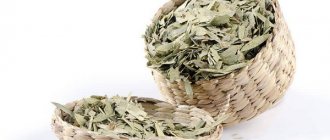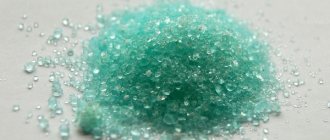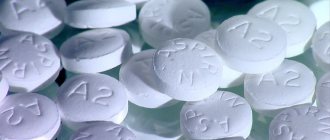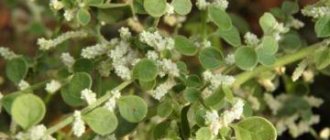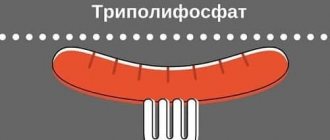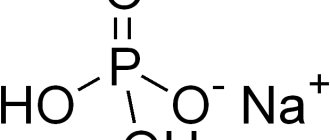Psyllium is a herbal remedy that is the husk of plantain seeds. Typically, the production of the substance involves grinding the shells to flour. Psyllium husk powder can be an independent dietary supplement or the basis of a medicine. The properties of the substance allow it to be widely used in gastroenterological and therapeutic practice: psyllium-based products can be prescribed by allergists-immunologists and dermatologists. In the article we will talk in more detail about the action of the psyllium seed shell and its therapeutic effect, as well as methods and forms of use.
Psyllium seed husk is a natural plant fiber. Regarding the question of how to collect psyllium, keep in mind that flea plantain is used as a raw material in production - it is grown specially. Therefore, you will not be able to obtain the medicine yourself.
The seeds of the plant are record holders for the content of soluble fiber - up to 70% of the total volume. Even oat bran cannot compare with psyllium in this parameter.
In the composition of psyllium, three types of components can be distinguished: good, weakly fermentable and non-fermentable. It is the last two components that are responsible for the ability of the substance to be converted into a gel, this provides sorbing properties and helps normalize stool. And therefore, psyllium is mainly used in gastroenterological practice to combat intestinal dysfunction.
Properties of psyllium
The high content of dietary fiber provides the therapeutic properties of psyllium.
The gel-like mass into which the substance is converted in the gastrointestinal tract has the following actions: +
- reducing blood glucose and cholesterol levels;
- binding and removal of toxins (including those formed as a result of the activity of pathogenic bacteria), poisons, allergens;
- soft enveloping of the intestinal mucosa, which promotes faster healing;
- creating a nutrient environment for beneficial intestinal bacteria, helping in the fight against dysbiosis;
- mild stimulation of intestinal motility, normalization of stool;
- slowdown in the absorption of fats and carbohydrates;
- prevention of constipation and related complications;
- minimizing the risk of gallstones, etc.
Dietary fiber absorbs allergens, breakdown products and other harmful substances. Fiber is involved in the formation of the food bolus and provides a long-lasting feeling of fullness. In addition, fiber reduces the load on the liver and also reduces the risk of developing heart and vascular diseases, since it partially binds cholesterol and fat. Psyllium helps the body cope with intoxication, gently eliminates hangover syndrome and has a strengthening effect on diarrhea. Experts recommend that you include in your diet components that are resistant to digestion.
The effects of psyllium have been examined in many scientific studies. Thus, researcher Pyanykh O. in his work indicates that “dietary fiber has a hypoglycemic and hypocholesterolemic effect” (Pyanykh O. P., 2022, p. 88).
Psyllium is a natural soluble fiber. It acts as gently as possible, without irritating the intestinal mucosa, unlike bran. Psyllium quickly absorbs water, turning into a slimy gel. Together with the liquid, it binds and removes toxins. Thus, the component helps thicken stool, reduce the frequency of bowel movements, and prevent dehydration. In this case, taking psyllium does not require drinking large amounts of water, so the drug will act faster.
Composition and nutritional value
The uniqueness of psyllium lies in its composition. It consists almost entirely (75-80%) of low-calorie soluble fiber . For comparison, in the same oat bran it is only 5 percent.
The calorie content of psyllium husk is 42 kcal per 100 grams. BJU ratio: 2.9-0.1-7.3 . What is noteworthy is that digestible carbohydrates are almost completely absent. Oat bran contains much more calories (approximately 320 per 100 g). At the same time, 60% are carbohydrate components.
Sofia Sokolova
Your guide to iHerb and vitamins
Ask a Question
In addition, psyllium contains substances beneficial to the human body, such as oleanolic acid, fatty oils, and nitrogenous components . It is they (together with soluble fiber) that help normalize the functioning of the gastrointestinal tract, reduce cholesterol levels and symptoms of diabetes, and stabilize body weight.
Psyllium is also used in cooking. Among fans of healthy nutrition, various keto diets and the preparation of carbohydrate-free baked goods from the shell of psyllium seeds are very common.
Indications for use
Psyllium-based products can be prescribed by a doctor to correct many diseases and symptoms:
- diarrhea of infectious, dysbiotic origin, stool disorders associated with uncontrolled use of laxatives, as well as traveler's diarrhea;
- post-infectious digestive disorders, including flatulence, unstable stools;
- irritable bowel syndrome;
- allergic diseases, dermatoses, allergic dermatoses, etc.;
- intestinal dysbiosis associated with the use of antibiotics and other factors;
- intoxication of various origins, including those associated with infectious diseases, poisoning, etc.
As part of complex therapy, psyllium is used for hypercholesterolemia, elevated blood glucose levels, diverticulosis, etc. It is important to remember that the choice of the form of the drug and determining the advisability of its use must be agreed with a doctor.
Get rid of intestinal problems
The natural British drug is not addictive and works immediately
Find Phytomucil with benefits
Psyllium helps with heartburn and stomach acidity
Many people suffer from acidity and psyllium is the best natural remedy for this condition. How does it work? The husk covers the stomach walls with a protective layer of mucus, which in turn protects them from the burning sensation of the acid. Moreover, since psyllium husk improves digestion and regulates the secretion of gastric juices, it reduces the incidence of acidity that a person may suffer from. Therefore, psyllium is used for diseases of the gastrointestinal tract, gastritis with low acidity, and peptic ulcers of the stomach and duodenum. For acute and chronic enteritis, ulcerative colitis, for diarrhea of various origins and constipation.
The second reason is the ability of psyllium, already mentioned above, to increase the secretion of GLP-1. This peptide has the ability to inhibit the secretion of hydrochloric acid.
Results of taking psyllium
The positive properties of psyllium allow it to be widely used in the treatment, correction and prevention of various disorders. We looked at the most common uses of this substance.
Treatment of diarrhea
Psyllium is a component of antidiarrheal drugs. Plant sorbent absorbs water and toxins, pathogenic bacteria and their metabolic products, as well as viruses. This allows the use of products based on it in the treatment of diarrhea of infectious, toxic origin, traveler's diarrhea, as well as antibiotic-associated diarrhea. With the help of psyllium, it is possible not only to cope with the cause of the disorder, but also to relieve unpleasant symptoms - normalize the consistency and frequency of stools, eliminate flatulence and abdominal pain.
Correction of post-infectious disorders
Poisoning or viral intestinal infections can damage the intestines for a long time. Even after acute symptoms have subsided, increased gas formation, unstable stools, alternating diarrhea and constipation, and pain in different parts of the abdomen may be observed. In this case, psyllium can act as part of corrective therapy and speed up full recovery.
Treatment of allergic dermatoses
Plant fibers absorb allergens and help improve the appearance of the skin, reducing the number and severity of rashes. Therefore, a psyllium-based drug can be part of a complex treatment for dermatological and allergic diseases. A dermatologist will tell you how to drink psyllium correctly. The substance will complement the action of external skin products and other components of therapy.
Relief of intoxication
Various intoxications, including those associated with work habits and drinking alcoholic beverages, can be relieved with the help of sorbents. Severe cases require hospitalization, but if this is not indicated, the doctor will prescribe medications to speed up the elimination of toxins. Among them may be preparations based on plant sorbents.
Normalization of stool when taking antidiarrheals
Exceeding the dosage, choosing the wrong drug, or uncontrolled use of laxatives can all cause diarrhea. In addition, some medications also have a laxative effect, which causes a lot of inconvenience. Psyllium is recommended for normalizing stool as one of the means of symptomatic therapy.
Improving well-being in acute infectious diseases
Severe infections and respiratory diseases are accompanied by general intoxication of the body. Psyllium is often used to improve well-being and speed up recovery, since it is important to help the body cope with the elimination of toxins and waste products of infectious agents.
What is psyllium and psyllium husk
Psyllium has several names, for example Ispagol, Isfagula, Plantago Ovata, also known as plantain oval, but most often it is called the husk of plantain seeds. Psyllium grows primarily in South and West Asia, but is commercially harvested and produced in India and Pakistan. If the packaging says USA, England, Great Britain, Russia, this only means that the product was packaged for the end consumer in these countries. There are two main types of psyllium:
- Psyllium Husks – Psyllium seed husk. Taken for the benefit of the gastrointestinal tract, cleansing and weight loss.
- Psyllium Powder is a flour made from the husks of psyllium seeds. Essentially, these are the same husks, but ground to a fine flour. It is used in cooking - baked goods, sauces, cheesecakes, etc. It is not very suitable for taking with water, because it is more difficult to dissolve and becomes very thick.
- There is also psyllium in capsules for oral administration, psyllium wafers, etc. Here you need to look at the raw materials - Powder or Husks. It is more convenient to take, but the effect is worse.
Its beneficial qualities are explained by the large amount of fiber, in the amount of 80-85% fiber. At the same time, soluble fiber usually takes up about 70%; for this indicator, psyllium has no analogues. What are the differences between these two types of fiber:
- Soluble fiber or fibre: A gel-like material that readily absorbs water and then expands in volume. Useful for reducing stomach acidity, normalizing blood pressure, reducing bad cholesterol, diabetes, weight loss.
- Insoluble fiber: does not dissolve in water, usually improves intestinal motility and removal of toxins.
What is important is that both types of fiber cannot be fermented by the intestinal microflora; psyllium passes right through it. This is the second most important reason for its beneficial properties. What other beneficial properties does psyllium have? Let's look at them below.
How to take: release forms, doses and duration of use
To determine how to drink psyllium correctly, you need to choose the form of the product. The main form of release is a powder that looks like flour. In this case, psyllium can be taken by diluting it in juice or water. The use of powder packaged in sachets ensures maximum ease of use. Firstly, in this case it is easier to calculate the dosage of psyllium. Secondly, the bag is easier to take with you to work or on a trip. Some manufacturers also produce capsules.
It is important to drink enough fluids because the substance has the ability to absorb water. The recommended amount of water for adults is up to 1.5-2 liters per day.
Psyllium can be used in conjunction with rehydration solutions, drugs for restoring intestinal microbiocenosis, antibiotics and other means. However, it is important to maintain a certain time interval between medications to ensure their high effectiveness.
You need to use psyllium-based supplements in a course. Features of application depend on what tasks the drug faces. Manufacturers indicate that using 1-3 tsp is sufficient. supplements 2-3 times a day, and capsules are usually taken one or two twice a day.
On average, it is enough to take seven grams three times a day on the first day, and then twice a day. The duration of the course can be up to 1−2 months. According to indications, you can repeat the course of treatment after a break.
Answering the question about how to take psyllium, let’s outline the main thing: you shouldn’t wait for the product to swell after diluting with water. It must be drunk immediately after dilution.
There are other rules of application:
- Please read the attached instructions carefully. The dosage is determined by the concentration of fibers in the powder.
- Start using gradually unless strictly indicated. Observe the body's reaction, skin condition and intestinal functions.
- Do not exceed the recommended doses, and also ensure that there is an interval between taking psyllium and other medications or food. This will help avoid the removal of beneficial substances along with toxins.
If you have any doubts or questions, it is important to seek additional medical advice.
When you don't have enough fiber
Not enough fiber? Instead of spending money on supplements, many of which are man-made, take psyllium. Just 1 tablespoon of this product contains about 5 grams of fiber.
Ideally, we need 25-30 grams of fiber per day, but most of us don't even come close to that. So, fighting a lazy intestine by using psyllium is the easiest way.
A high fiber diet is considered essential for a healthy diet. It improves both the digestive system and the condition of the heart and blood vessels, and helps control blood sugar levels. The best way to get fiber is to eat plenty of fresh fruits and vegetables. But in the winter-spring season, “plastic” greens, which are sold in supermarkets, leave much to be desired, so you have to look for alternatives.
But what is psyllium?
Psyllium is psyllium husk, an edible soluble fiber and prebiotic known for its colon cleansing properties. In water it can expand to 16 times its volume! Once in the intestines, it expands, forming a gel and absorbing water from the colon, and then easily and quickly eliminates waste.
Compared to chemical laxatives, psyllium husk is a safe remedy that does not cause addiction or side effects. Research has shown that psyllium is safe, well tolerated, and improves the glycemic index in people with diabetes. Its fiber is similar to that found in many fruits and vegetables. However, it contains virtually no unnecessary elements such as sugar or fat. For this reason, psyllium husk is an ideal way to get more fiber without adding calories.
But you need to drink it with water. As much water as possible
Psyllium fiber absorbs liquid, so drink enough water for the product to take effect. The most common proportion is when 1 tablespoon of the product is added to a glass of water, coconut water or juice.
Mix into a smoothie or add to porridge
Fortify yoghurt, milk or kefir with fiber by adding a tablespoon of psyllium. You won't even notice it there, but your body will thank you. By the way, it’s good to add chia seeds to them.
Add psyllium to your morning oatmeal. Depending on the variety, a cup of oatmeal contains about 10 grams of fiber. One tablespoon of psyllium will add another 5 grams of fiber. Add one tablespoon of chia seeds and you'll increase the fiber content by another 5 grams. That's only 20 grams of fiber you provided yourself with in the morning. Isn't it easy?
How to take psyllium
You can buy psyllium husk ready-made, but before doing so, make sure that it is 100% pure from impurities. It is usually taken by mixing one tablespoon with a glass of water or any other liquid up to three times a day.
At first, take in small doses to avoid abdominal discomfort. Once the process is adjusted, increase it little by little.
In most cases, the package contains dosage information, but the general rule is to take 1.5-2 teaspoons per day, so no more than 30 grams. Exceeding this norm is considered a loading dose, which should be taken only under the supervision of a doctor or as recommended for a specific digestive problem.
Dietary fiber works best when taken into the body through food. Thus, it is best to consume the product before or during meals. But it is not forbidden to take a portion between meals or before bed to satisfy hunger. The timing of your appointment depends on your personal preferences—and hopefully your results!
Psyllium in baking
Psyllium husk is a recognized baking ingredient. It is good to use as a thickener for gluten-free recipes. It's an inexpensive binding agent, and just half a teaspoon of husk per serving will be enough to keep your dish from being dry and falling apart. This is a great gluten-free fiber! If you suffer from gluten intolerance, psyllium powder may be a magic pill. You can use it to bake cakes, bread, pancakes, muffins - whatever!
A remarkable property of psyllium is that it does not change the taste of the original products. Therefore, you can safely use it instead of eggs when baking and cooking, to thicken soups and sauces. The husks can be added to morning oatmeal, stirred into smoothies, and mixed with breadcrumbs to add texture to cutlets, meatloaves, and other ground meat dishes. It will not only prevent it from falling apart, but will also enrich the dish with valuable fiber, which meat lacks.
Is it possible to overuse psyllium husk?
Your body will tell you if you've overdone it and will respond with a feeling of heaviness and bloating in your gut. Don't forget to drink plenty of water! Large doses (more than 30 grams per day) may affect the absorption of certain substances, such as iron, calcium, zinc, and vitamin B-12. Absorption problems can be avoided by reducing the amount of the product, drinking it an hour or two before or after meals, preparing nutritious, balanced meals, and taking a multivitamin.
Does psyllium help with weight loss?
There is no magic. Psyllium works because it contains virtually no calories, improves digestion, controls blood sugar and makes you feel full. One teaspoon of psyllium husk contains 0.6 calories, which is only 28 calories per 100 grams. The most difficult part of any weight loss program is controlling your appetite. Psyllium husk helps promote satiety and helps reduce fat intake. By swelling in the intestines, it prolongs the feeling of fullness for an additional hour after eating.
On the other hand, it saves you from several waste kilograms. Whether you like it or not, you are carrying around a huge amount of extra weight in the form of feces. The husk will cleanse your intestines and give you a feeling of lightness without requiring devices like an enema, so this type of cleansing is suitable for almost everyone.
And as the husks move through your digestive system, they absorb the water and toxins you eat every day. Typically, these harmful chemicals are absorbed into the bloodstream and carried throughout the body. So cleansing the body is another wonderful bonus that psyllium husk will bring you.
Are there any contraindications?
The benefits of psyllium for the body are obvious, but it is important that there are no contraindications for use. Individual intolerance to this component is extremely rare, but there are limitations from the gastrointestinal tract:
- some acute inflammatory diseases of the digestive tract (for example, acute pancreatitis);
- gastrointestinal obstruction;
- malignant tumors of the digestive system;
- acute surgical pathologies;
- fecal blockage.
Therefore, in cases where there is reason to suspect serious conditions, it is not recommended to take any sorbents - it is important to immediately consult a doctor.
Overdose
Symptoms of acute overdose of retinol (vitamin A) (develop 6 hours after administration): hypervitaminosis A: in adults - drowsiness, lethargy, diplopia, dizziness, severe headache, nausea, severe vomiting, diarrhea, irritability, osteoporosis, bleeding from the gums, dryness and ulceration of the oral mucosa, peeling of the lips, skin (especially palms), agitation, confusion. Symptoms of chronic intoxication with retinol (vitamin A): anorexia, bone pain, cracks and dry skin, lips, dry oral mucosa, gastralgia, vomiting, hyperthermia, asthenia, headache, photosensitivity, pollakiuria, nocturia, polyuria, irritability, hair loss hair, yellow-orange spots on the soles, palms, in the area of the nasolabial triangle, hepatotoxic phenomena, increased intraocular pressure, oligomenorrhea, portal hypertension, hemolytic anemia, changes in bone radiographs, convulsions; fetotoxic phenomena: in humans - malformations of the urinary system, growth retardation, early closure of epiphyseal growth zones; in animals - malformations of the central nervous system, spine, chest, heart, eyes, upper palate, genitourinary system. Symptoms of tocopherol (vitamin E) overdose: when taken for a long period in doses of 400-800 IU/day. - blurred vision, dizziness, headache, nausea, diarrhea, gastralgia, asthenia; when taking more than 800 units/day. over a long period - increased risk of bleeding in patients with hypovitaminosis K, impaired metabolism of thyroid hormones, disorders of sexual function, thrombophlebitis, thromboembolism, necrotizing colitis, sepsis, hepatomegaly, hyperbilirubinemia, renal failure, hemorrhage in the retina, hemorrhagic stroke, ascites . Treatment: drug withdrawal; symptomatic therapy.
Benefits of Psyllium
Psyllium is a natural sorbent and therefore has no strict restrictions. The sorbent is used in obstetric practice, in pregnant and lactating women. Its use is also permitted in children from three years of age, as well as in the elderly. The substance acts gently and does not injure the intestinal mucous membranes. High efficiency allows you to quickly cope with symptoms of diarrhea and other conditions.
Psyllium is taken for weight loss
There is evidence that psyllium husk can help people maintain a healthy weight, as well as reduce weight due to the absorption of fluid in the body and a feeling of fullness. The mechanism of this beneficial property is again explained by the fact that the husk of psyllium seeds prevents the ingested food from being rapidly absorbed in the small intestines. The entire gel mass of psyllium with food passes all the way to the final sections of the large intestine, gradually and continuously providing the body with nutrients and a feeling of satiety.
Psyllium husk, in addition to lowering body mass index (BMI), reduces the percentage of body fat . The study notes that this was achieved using psyllium husk alone, combining this product with a healthy diet yielded even more excellent results.
Recipe for diet bread with psyllium
Bread prepared according to this recipe turns out aromatic, tasty, with a crispy crust. For preparation you will need the following ingredients:
- 10 g psyllium;
- 5 g dry yeast;
- 3 chicken eggs;
- 50 g starch;
- 6 tablespoons whole grain flour;
- 200 ml kefir or low-fat yogurt;
- ½ teaspoon salt;
- ½ teaspoon sugar.
Heat kefir or yogurt to 35-38°C, dissolve yeast and sugar in it, leave for 10 minutes to ferment. Then add the psyllium and stir. Leave the mixture for another 5-7 minutes. When the flour swells and the dough looks like semolina porridge, add eggs, starch, salt and flour.
Knead soft plastic dough, place it in a baking dish and place in a warm place. When the dough has risen and approximately doubled in size, you can start baking.
Place the pan in an oven preheated to 190°C and bake for about 40 minutes, checking for doneness with a wooden skewer. When the bread is ready, remove it from the pan, cover with a clean towel and leave to cool completely.
Apple charlotte with psyllium
Apple charlotte is a simple but very tasty dish that even a novice cook can prepare. We offer you a recipe for dietary charlotte with psyllium, for the preparation of which you will need:
- 5-6 medium-sized sour apples;
- 250 g oat flour;
- 10 psyllium;
- 150 g date syrup;
- 30 g nut butter;
- 6 g cinnamon;
- 10 g soda;
- 1 teaspoon lemon juice.
Remove the core from the apples and cut into thin slices. Prepare all other ingredients, as the dough needs to be kneaded quickly before the psyllium swells.
Combine 250 ml water, syrup, flour, psyllium, nut butter and cinnamon and blend with a blender. Quench the soda with lemon juice and add to the dough.
Place apples on the bottom of the baking dish and fill them with dough. Place the charlotte in a preheated oven and bake at 180-190°C until cooked (about 35-40 minutes).
A delicious, aromatic dessert with psyllium is ready!
Cheesecakes with psyllium without wheat flour
This cheesecake recipe will especially appeal to those who follow a keto diet, that is, they limit the amount of carbohydrates in their diet. To prepare a childhood favorite dish you will need a minimum of ingredients:
- 500 g fat cottage cheese;
- 50 g almond or coconut flour;
- 15 g psyllium;
- 1 g vanillin;
- sweetener to taste.
Mix all ingredients to form a soft, homogeneous dough. Form cheesecakes and fry them in vegetable oil. When serving, you can decorate the dish with your favorite fruits or berries.
Drug interactions
Retinol weakens the effect of calcium supplements and increases the risk of developing hypercalcemia. Cholestyramine, colestipol, mineral oils, neomycin reduce the absorption of vitamins A and E (their dose may need to be increased). Oral contraceptives increase plasma concentrations of retinol. Isotretinoin increases the risk of developing retinol toxicity. The simultaneous use of tetracycline and retinol in high doses (50 thousand units and above) increases the risk of developing intracranial hypertension. Tocopherol (vitamin E) enhances the effect of corticosteroids, NSAIDs, antioxidants, increases the effectiveness and reduces the toxicity of vitamins A, D, and cardiac glycosides. Prescribing vitamin E in high doses can cause vitamin A deficiency in the body. Tocopherol (vitamin E) increases the effectiveness of antiepileptic drugs in patients with epilepsy (who have increased levels of lipid peroxidation products in the blood). Simultaneous use of vitamin E at a dose of more than 400 IU/day. with anticoagulants (coumarin and indanedione derivatives) increases the risk of developing hypoprothrombinemia and bleeding. The use of iron supplements in high doses increases oxidative processes in the body, which increases the need for vitamin E.
Delicious pancakes with psyllium
Most pancake recipes offered on the Dukan diet or keto diet contain large amounts of eggs, as well as full-fat cheese or cream. These pancakes are more reminiscent of a thin omelette than the usual Shrovetide dish. We offer you a simple recipe for psyllium pancakes that even a child can master. To prepare you will need:
- 3 chicken eggs;
- 3 g psyllium;
- 100 ml milk;
- a pinch of salt;
- sweetener if necessary.
Beat eggs with salt and add sweetener if you plan to bake sweet pancakes. Then add milk, 100 ml water and psyllium. Mix all ingredients thoroughly so that there are no lumps and fry the pancakes.
